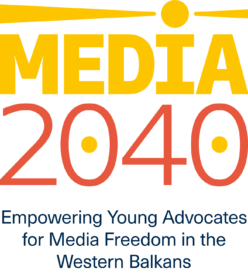MEDIA POLICY-MAKING
Who are the main players in policy making? To what extent is the policy making process inclusive towards journalists and citizens association?
- Governments are the key players in developing media policy and legislation. In BIH a role is also played by the Office of High Representative.
- Policy is created in inclusive way in MNE, while it is relatively closed in other media systems.
- Overall, strategic documents about the media and media legislation align with the EU standards, but full implementation is mostly lacking.
REGULATORY BODIES
What are the main regulatory bodies in the media sector? Do they have sufficient levels of organizational and financial autonomy? How efficient is media regulation?
- In each media system there is a regulatory body for media: Audiovisual Media Authority and Electronic and Postal Communications Authority in ALB, Communications Regulatory Agency in BIH, Broadcasting Council, and Agency for Audio and Audio-visual Media Services in MKD, Regulatory Authority for Electronic Media in SRB, Agency for Electronic Media in MNE, and Independent Media Commission in KOS. Most of these bodies are in charge of monitoring broadcast media.
- Necessary autonomy from politics is not achieved and there are different examples of regulatory bodies being politicized (e.g. appointments of persons close to political parties in the governing boards of regulatory agencies).
- The regulatory bodies are least efficient in media regulation in SRB and ALB, and relatively successful in other media systems.
PUBLIC BROADCASTING
How is public broadcasting organized? Do public service media have sufficient organizational, financial and editorial autonomy?
- Organization of public service media (PSM) follows specifics of each media system. In BIH, there are three operating PSM: BHRT covering entire country, RTVFBiH and RTRS in two entities. In Serbia there are two: RTS covering entire country and RTV covering the multilingual province of Vojvodina. In KOS, a single broadcaster RTK has two channels one in Albanian, one in Serbian. In ALB, MKD and MNE there is a one public broadcaster (RTSH with four local stations, MRT and RTCG), and in MNE public service also include a network of local media.
- Content offered by PSM is of higher quality that the one offered by private media providers. However, the basic principles of PSM – independence, diversity, balance, quality of content, non-discrimination and meeting the needs of the public – are yet to be achieved.
- Legislative arrangements are made to secure organizational, financial and editorial autonomy of PSM, but in practice legal provisions are often not implemented.
- Across the WB region, concerns are raised about the independence of the governing bodies of PSM that further affects editorial autonomy. The challenges are highest in ALB, BIH and SRB.
- In MKD, MNE and KOS public service media are financed from state budget, in SRB, BIH and ALB they are funded from a tax or fee collected from the citizens (and occasional state budget supplements). Except in the case MNE that allocates stable financing of 3 of GDP to public broadcaster, others do not hold sufficient financial autonomy.
CITIZENS
What is the public perception of public service media? What is the level of trust in them?
- In MNE, SRB, KOS public service media is the key source of news for majority of citizens, often surpassing the private media. In ALB, BIH and MKD public service media do not attract large audience.
- Trust in public service media is affected by ethnic and political lines of polarization. In MNE, SRB and KOS higher portions of citizens trusts public service media, while in ALB, BIH and MKD public service media are not trusted and viewed as politicized.
EU DIMENSION
- Existence of independent media regulation is upheld in various EU documents, most notably in Audiovisual and Media Services Directive. Autonomy of public service media is further protected in the European Media Freedom Act.
- EU monitors harmonization of WB media systems with EU standards, usually placing more attention on policy and legislation, and not on implementation.
Key takeaways about Media institutions.
